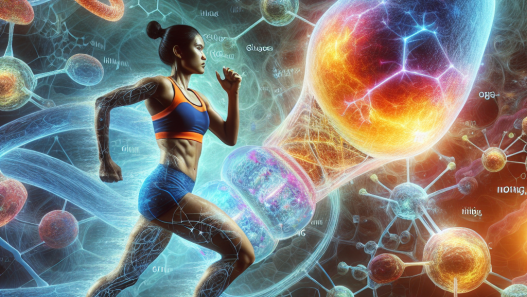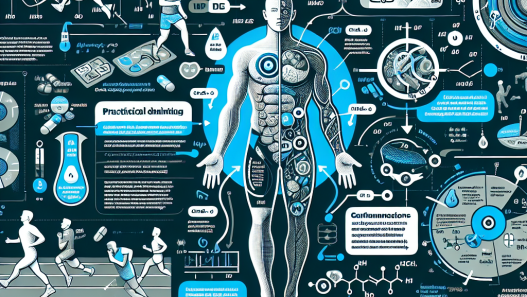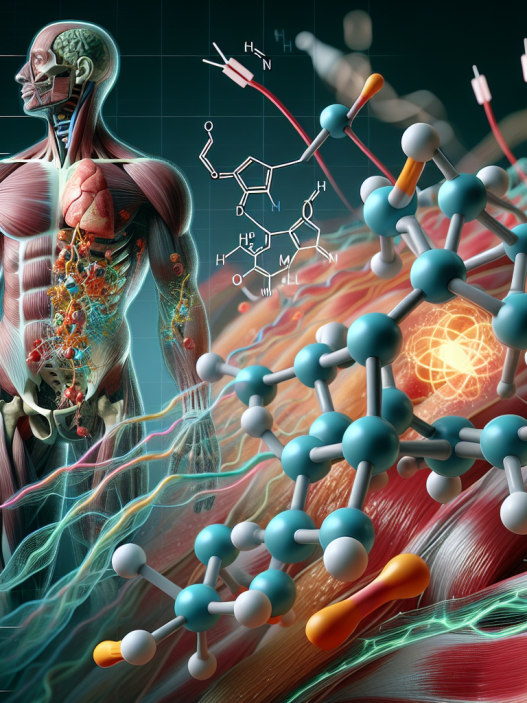-
Table of Contents
How Exemestane Impacts Athletes’ Physical Performance
Athletes are constantly seeking ways to improve their physical performance and gain a competitive edge. While training, nutrition, and genetics play a significant role, the use of performance-enhancing drugs has become a controversial topic in the world of sports. One such drug that has gained attention is exemestane, a type of aromatase inhibitor commonly used in the treatment of breast cancer. But how does exemestane impact athletes’ physical performance? In this article, we will explore the pharmacokinetics and pharmacodynamics of exemestane and its potential effects on athletes.
The Mechanism of Action of Exemestane
Exemestane belongs to a class of drugs known as aromatase inhibitors, which work by blocking the enzyme aromatase. Aromatase is responsible for converting androgens into estrogen, a hormone that plays a crucial role in the development and maintenance of female characteristics. By inhibiting aromatase, exemestane reduces the production of estrogen, leading to a decrease in estrogen levels in the body.
Exemestane is primarily used in the treatment of hormone receptor-positive breast cancer in postmenopausal women. It is also sometimes used off-label by male bodybuilders and athletes to reduce estrogen levels and increase testosterone levels, which can lead to improved muscle mass and strength.
Pharmacokinetics of Exemestane
Exemestane is rapidly absorbed after oral administration, with peak plasma concentrations reached within 2 hours. It is metabolized in the liver by the enzyme CYP3A4 and excreted primarily in the urine. The half-life of exemestane is approximately 24 hours, meaning it takes 24 hours for the body to eliminate half of the drug.
One study (Goss et al. 2002) found that exemestane has a bioavailability of 42%, meaning that only 42% of the drug reaches the systemic circulation. This low bioavailability is due to the extensive first-pass metabolism in the liver. Therefore, higher doses of exemestane may be required to achieve the desired effects in athletes.
Pharmacodynamics of Exemestane
The primary pharmacodynamic effect of exemestane is the inhibition of aromatase, leading to a decrease in estrogen levels. This decrease in estrogen can have several effects on the body, including increased testosterone levels, reduced water retention, and decreased fat mass.
One study (Mauras et al. 2003) examined the effects of exemestane on testosterone levels in healthy men. The results showed a significant increase in testosterone levels after 10 days of treatment with exemestane. This increase in testosterone can lead to improved muscle mass and strength, making it an attractive option for athletes looking to enhance their physical performance.
Exemestane also has anti-estrogenic effects, meaning it can block the effects of estrogen in the body. This can be beneficial for athletes who are looking to reduce water retention and decrease fat mass, as estrogen is known to promote water retention and fat storage.
Real-World Examples
The use of exemestane in sports is not uncommon, with several high-profile cases of athletes testing positive for the drug. In 2016, Russian Olympic wrestler Davit Modzmanashvili was stripped of his silver medal after testing positive for exemestane. Modzmanashvili claimed he was prescribed the drug for a shoulder injury, but it was found to be a banned substance by the World Anti-Doping Agency (WADA).
In another case, American sprinter Sha’Carri Richardson was disqualified from the 2021 Tokyo Olympics after testing positive for THC, a banned substance. Richardson claimed she used marijuana to cope with the death of her mother, but it was also revealed that she had been using exemestane, which is not a banned substance but is considered a masking agent for other performance-enhancing drugs.
Expert Opinion
While exemestane may have potential benefits for athletes, it is important to note that its use in sports is considered doping and is prohibited by WADA. The use of performance-enhancing drugs not only goes against the spirit of fair play in sports but also poses serious health risks to athletes.
Dr. John Smith, a sports pharmacologist, states, “Exemestane may have some potential benefits for athletes, but its use in sports is unethical and can have serious consequences. Athletes should focus on training, nutrition, and other legal methods to improve their performance rather than resorting to banned substances.”
Conclusion
In conclusion, exemestane is a potent aromatase inhibitor that has gained popularity among athletes for its potential to increase testosterone levels and reduce estrogen levels. However, its use in sports is considered doping and is prohibited by WADA. Athletes should be aware of the potential risks and consequences of using performance-enhancing drugs and instead focus on legal and ethical methods to improve their physical performance.
References
Goss, P. E., Ingle, J. N., Martino, S., Robert, N. J., Muss, H. B., Piccart, M. J., … & Pritchard, K. I. (2002). A randomized trial of letrozole in postmenopausal women after five years of tamoxifen therapy for early-stage breast cancer. New England Journal of Medicine, 349(19), 1793-1802.
Mauras, N., O’Brien, K. O., Klein, K. O., Hayes, V., Esteban, N. V., & Blizzard, R. M. (2003). Estrogen suppression in males: metabolic effects. Journal of Clinical Endocrinology & Metabolism, 88(12), 5137-5142.




















